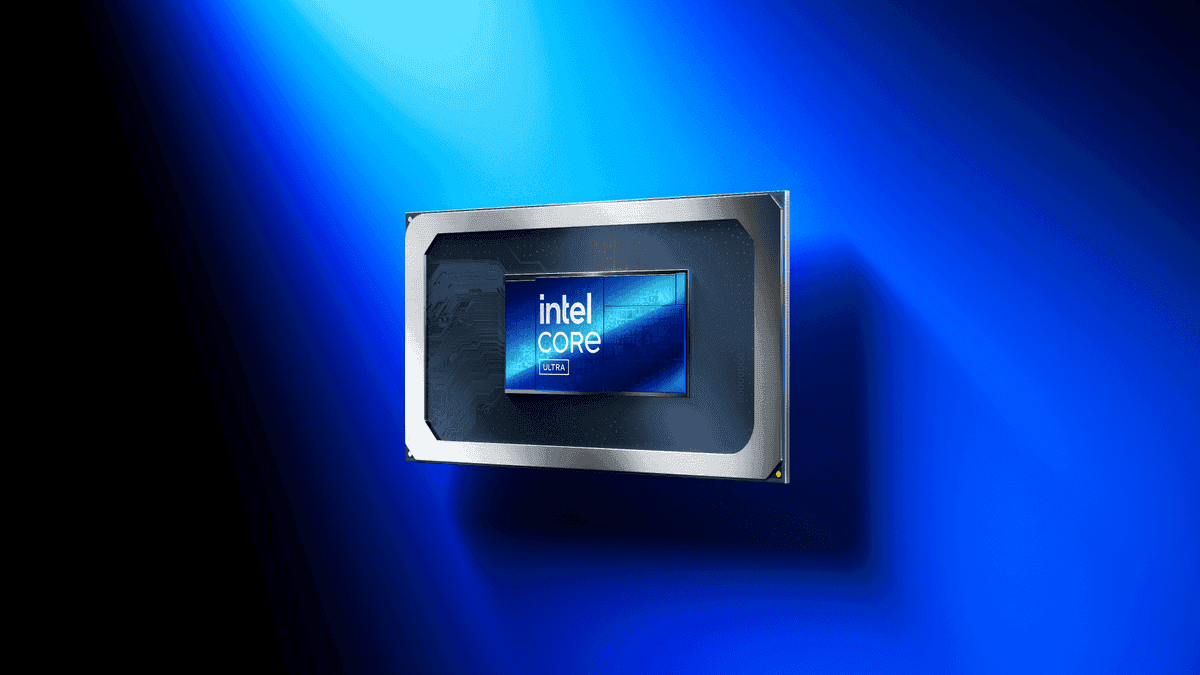Intel Unveils Second-Gen AI-Enhanced Chip for Automotive Industry at Auto Shanghai 2025
2 Sources
2 Sources
[1]
Intel focuses automotive efforts on China with Auto Shanghai debut
Ever since Intel launched its automotive efforts in a high-profile announcement in early 2024, with its automotive business headquartered in China, the chipmaker's ambitions for this segment have remained just as strong after current CEO Lip-bu Tan took the helm in March 2025. At the recent Auto Shanghai 2025, Intel marked its debut at the trade show with a number of major announcements. The company launched its second-generation AI-enhanced software-defined vehicle (SDV) SoC, marking a first for the automotive industry with its multi-process node chiplet architecture, and announced partnerships with ModelBest and Black Sesame Technologies to collaborate on smart cockpits and immersive cockpit experiences. In post-press conference interviews with Chinese and foreign media, Intel VP and Intel Automotive GM Jack Weast stressed that the automotive sector represents one of the greatest growth opportunities for Intel, and the company chose to base its automotive business in China with an eye on the massive potential presented by China's car market. When asked about the current revenue contribution of Intel's automotive business, Weast declined to give a specific figure. However, he noted that automotive is part of Intel's Client Computing Group (CCG), alongside the company's PC-related businesses, meaning that the automotive business can leverage Intel's substantial investments in AI PCs. In addition, Weast noted that Intel is aspiring to become an integral part of the future of the automotive industry, and the massive potential for growth was what led the company to launch its automotive efforts, as well as his own relocation to China. Intel first announced its entry into the automotive market with the launch of its first-generation AI-enhanced SDV SoC at CES 2024. Nearly 18 months later, the company has unveiled its second-generation product, which employs a multi-node chiplet architecture that integrates independent CPU and GPU computing units while utilizing multiple process nodes, according to Weast. This allows a flexible mix of process nodes to achieve optimal performance: for example, I/O modules do not require the most advanced process nodes, and thus more mature process technologies can be used to optimize performance. Compared to the first-generation SDV SoC, the second-generation product features a tenfold increase in AI performance, a 61% boost in CPU power efficiency per watt, and improved audio and graphics processing capabilities with support for up to 12 camera channels. The new SoC is slated to be installed in mass-production vehicles beginning in 2026. According to Weast, the new SoC will bring the AI PC experience to vehicles, allowing users to enjoy AAA games, hi-def video, and audio right inside the car. Furthermore, he hinted at further partnership announcements to come in 2025, following the footsteps of Chinese AI chipmaker Black Sesame Technologies and AI model firm ModelBest. In terms of immersive cockpits, Weast noted that Intel is open to collaborating with all advanced driver assistance system (ADAS) providers in addition to Black Sesame. Intel's partnership with ModelBest will primarily center on on-device, AI-enhanced smart cockpits to define the next generation of automotive AI.
[2]
Intel's second-gen car chip packs serious AI power
Intel made its debut at Auto Shanghai 2025 with significant announcements, including the launch of its second-generation AI-enhanced software-defined vehicle (SDV) SoC and partnerships with ModelBest and Black Sesame Technologies. The company's automotive business is headquartered in China, a market Intel views as having massive potential. Intel VP and Intel Automotive GM Jack Weast stated that the automotive sector is one of the greatest growth opportunities for Intel. He highlighted that the company's automotive business is part of its Client Computing Group (CCG), alongside PC-related businesses, allowing it to leverage substantial investments in AI PCs. Weast declined to provide the current revenue contribution of Intel's automotive business. The second-generation AI-enhanced SDV SoC features a multi-process node chiplet architecture, integrating independent CPU and GPU computing units. This design enables a flexible mix of process nodes for optimal performance. Compared to the first-generation SDV SoC, the new product offers a tenfold increase in AI performance, a 61% boost in CPU power efficiency per watt, and enhanced audio and graphics processing capabilities, supporting up to 12 camera channels. The new SoC is expected to be installed in mass-production vehicles starting in 2026 and will bring the AI PC experience to vehicles. Weast noted that this will allow users to enjoy AAA games, high-definition video, and audio inside the car. Intel's partnership with ModelBest will focus on on-device, AI-enhanced smart cockpits, while its collaboration with Black Sesame Technologies will center on immersive cockpit experiences. Intel says: Back to the office, four days a week Weast indicated that Intel is open to collaborating with all advanced driver assistance system (ADAS) providers for immersive cockpits. He also hinted at further partnership announcements in 2025. Intel's entry into the automotive market was first announced at CES 2024 with the launch of its first-generation AI-enhanced SDV SoC, nearly 18 months before the unveiling of the second-generation product.
Share
Share
Copy Link
Intel debuts its second-generation AI-enhanced software-defined vehicle (SDV) SoC at Auto Shanghai 2025, showcasing significant improvements in AI performance and partnerships with Chinese firms to advance smart cockpit technology.

Intel's Strategic Move into Automotive AI
Intel has made a significant leap in the automotive industry with its debut at Auto Shanghai 2025, marking a crucial milestone in its automotive efforts that began in early 2024. The company's decision to headquarter its automotive business in China underscores the importance it places on this market
1
.Second-Generation AI-Enhanced SDV SoC
At the heart of Intel's automotive push is the launch of its second-generation AI-enhanced software-defined vehicle (SDV) System-on-Chip (SoC). This new chip boasts a groundbreaking multi-process node chiplet architecture, integrating independent CPU and GPU computing units
1
.Key improvements over the first-generation SDV SoC include:
- A tenfold increase in AI performance
- 61% boost in CPU power efficiency per watt
- Enhanced audio and graphics processing capabilities
- Support for up to 12 camera channels
2
The flexible mix of process nodes allows for optimal performance, with more mature process technologies used for components that don't require cutting-edge nodes, such as I/O modules
1
.Partnerships and Future Plans
Intel has announced strategic partnerships with Chinese firms to advance smart cockpit technology:
- ModelBest: Collaboration on on-device, AI-enhanced smart cockpits to define the next generation of automotive AI
1
. - Black Sesame Technologies: Focus on immersive cockpit experiences
2
.
Intel VP and Automotive GM Jack Weast hinted at further partnership announcements to come in 2025, emphasizing the company's openness to collaborating with all advanced driver assistance system (ADAS) providers
1
.Related Stories
Market Potential and Business Strategy
Weast stressed that the automotive sector represents one of the greatest growth opportunities for Intel. The company's automotive business is part of its Client Computing Group (CCG), allowing it to leverage substantial investments in AI PCs
2
.While specific revenue figures for the automotive business were not disclosed, Weast emphasized the massive potential of China's car market as a key factor in Intel's decision to base its automotive operations there
1
.Future of In-Car Experience
The new SoC is expected to be installed in mass-production vehicles starting in 2026. Intel aims to bring the AI PC experience to vehicles, enabling users to enjoy AAA games, high-definition video, and audio inside the car
2
. This advancement signifies Intel's aspiration to become an integral part of the automotive industry's future, focusing on enhancing the in-car experience through advanced AI capabilities.References
Summarized by
Navi
[2]
Related Stories
Intel Unveils Whole-Vehicle Platform and AWS Partnership at CES 2025 to Accelerate Software-Defined Vehicle Innovation
08 Jan 2025•Technology

Intel Unveils Next-Gen Automotive SoCs: Frisco Lake and Grizzly Lake to Power Future Vehicles
25 Apr 2025•Technology

Intel Expands into Automotive AI Market with Arc GPUs
09 Aug 2024

Recent Highlights
1
Google launches Gemini 3 Flash as default AI model, delivering speed with Pro-grade reasoning
Technology

2
OpenAI launches GPT Image 1.5 as AI image generator war with Google intensifies
Technology

3
OpenAI launches ChatGPT app store, opening doors for third-party developers to build AI-powered apps
Technology





